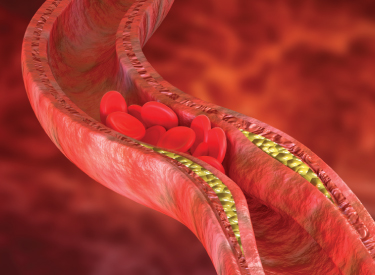The Pulmonary Arterial Hypertension Therapeutics Market Is Expanding Due To The Development Of Novel Therapies
Pulmonary Arterial Hypertension (PAH) is a rare, chronic, and progressive form of pulmonary hypertension marked by elevated pulmonary arterial pressure (PAP) and pulmonary vascular resistance (PVR) in blood vessels carrying blood from the right side of the heart through the lungs. It occurs due to the small pulmonary arteries tightening and stiffening, resulting in right ventricular dysfunction and vessel obstruction. Pulmonary Hypertension is a progressive condition that causes the arteries in the lungs and heart to narrow. It is most common in patients with lung or heart disease. Based on the origin of the cause, there are three types of Pulmonary Arterial Hypertension- Idiopathic, heritable, and anorexigenic-induced PAH.
Pulmonary Arterial Hypertension symptoms are similar to those seen in heart and lung conditions. PAH is diagnosed using various techniques and blood tests, including a chest X-ray, blood tests, cardiac catheterization, electrocardiogram, and echocardiogram. Pulmonary Arterial Hypertension is also linked to several other medical conditions, including cirrhosis and connective tissue diseases such as scleroderma. A connective tissue disease is present in approximately 30% of Pulmonary Arterial Hypertension patients.
Pulmonary Arterial Hypertension Epidemiology
Pulmonary Arterial Hypertension (PAH) is a rare disorder that affects 15 to 50 people per million in the United States and Europe. Idiopathic, heritable, and anorexigenic-induced PAH account for 52.6 percent of all cases of Pulmonary Arterial Hypertension. Pulmonary Arterial Hypertension primarily affects women between the ages of 30 and 60. As per DelveInsight estimates, Pulmonary Arterial Hypertension total prevalent cases was 70,774 in the 7MM in 2017. Furthermore, new cases are estimated to occur in one to two people per million in the United States each year. In Europe, the Pulmonary Arterial Hypertension incidence is expected to be similar. Each year, 500-1000 new cases of Pulmonary Arterial Hypertension are diagnosed in the United States.
Pulmonary Arterial Hypertension Current Treatment Landscape
The primary goal for Pulmonary Arterial Hypertension treatment is to improve patients’ symptoms and slow the rate of clinical deterioration. Pulmonary Arterial Hypertension is treated with general measures, supportive therapy, pharmacological treatment, and surgical treatment. Patients are advised to make lifestyle changes in their day-to-day activities. Pregnancy is not advised for women suffering from Pulmonary Arterial Hypertension. Vaccines against influenza and pneumococcal infection are also advised. Patients should refrain from engaging in vigorous physical activities. Supportive therapy for Pulmonary Arterial Hypertension includes oral anticoagulants, supplemental oxygen therapy, and cardiovascular drugs.
The current Pulmonary Arterial Hypertension therapeutics market is mainly driven by endothelin receptor antagonists, prostanoids, and phosphodiesterase inhibitors. Endothelin receptor antagonists are the most commonly used therapeutics for Pulmonary Arterial Hypertension treatment. LetairisVolibris (GlaxoSmithKline plcGilead Science), Opsumit (Actelion Pharmaceuticals Ltd), and Tracleer (Actelion Pharmaceuticals Ltd) are the most frequently prescribed endothelin receptor antagonists for the treatment of Pulmonary Arterial Hypertension. These antagonists work by relaxing blood vessels as well as inhibiting blood vessel proliferation and remodeling. There are numerous Prostacyclin/Prostanoids available for the treatment of Pulmonary Arterial Hypertension. Uptravi (Actelion Pharmaceuticals Ltd) and Adempas (Bayer AG) are the two FDA-approved prostacyclin receptor agonists used for treating Pulmonary Arterial Hypertension patients. There are only a few therapies that target phosphodiesterase for the treatment of Pulmonary Arterial Hypertension. Revatio (Pfizer) and Adcirca (Eli Lilly and Co./GSK United Corporation) are the approved phosphodiesterase inhibitors that suppress high blood pressure by releasing nitric oxide.
DelveInsight estimates that the Pulmonary Arterial Hypertension market was worth USD 4.6 billion in 2017 in the 7MM, and it is expected to increase further by 2030.
Pulmonary Arterial Hypertension Upcoming Therapies
The Pulmonary Arterial Hypertension market has a promising outlook with many emerging therapies. An increase in the growth of the market is expected due to upcoming Pulmonary Arterial Hypertension therapies. Several companies across the globe, such as Reviva Pharmaceuticals, United Therapeutics Corp., Reata Pharmaceutical, Arena Pharmaceuticals, Acceleron Pharma, and others, are diligently working towards developing novel therapies for Pulmonary Arterial Hypertension treatment. Therapies such as RP5063 (Brilaroxazine), Aurora-GT, Bardoxolone methyl, Ralinepag, Sotatercept, and several others are believed to create a positive impact on the Pulmonary Arterial Hypertension market size and will be available soon for the treatment of Pulmonary Arterial Hypertension. Furthermore, pharmaceutical companies’ extensive research and development activities are also expected to fuel the Pulmonary Arterial Hypertension market growth.
Way Ahead
There has been substantial progress in the treatment of PAH by developing drugs that target three vital pathophysiological pathways, but still, management for many patients remains suboptimal. Research into novel treatments for PAH must continue to improve patient outcomes. Furthermore, evolving pre-clinical studies and clinical trial designs promise the future development of PAH treatment strategies.

